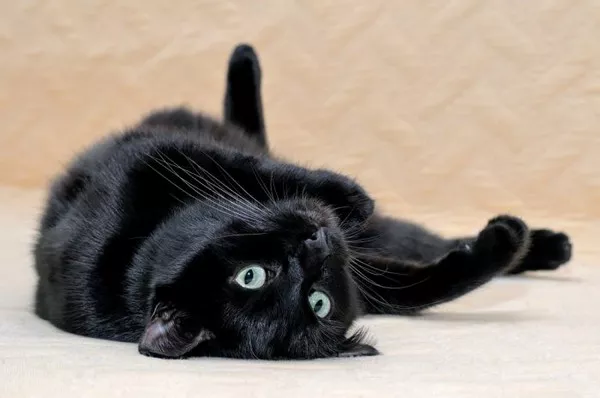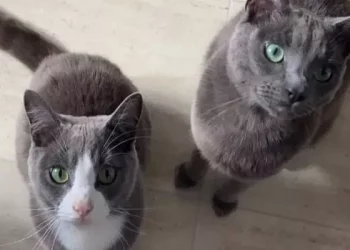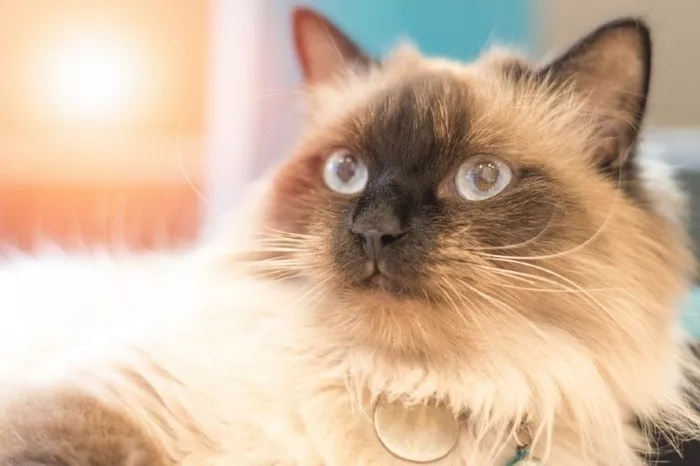Bombay cats, known for their sleek black coats and striking yellow eyes, are a beloved breed among cat enthusiasts. With their affectionate nature and playful demeanor, Bombay cats make wonderful companions for households of all types. However, one question that often arises among potential cat owners is whether Bombay cats are talkative. In this article, we’ll explore the vocal traits of Bombay cats, examining their communication style, factors that influence vocalization, and training tips for managing vocal behavior effectively.
Understanding Bombay Cats
Before delving into the talkative nature of Bombay cats, it’s important to have a basic understanding of the breed. Bombay cats are a relatively new breed, developed in the mid-20th century by crossing American Shorthair and Burmese cats to create a cat with a distinctive black coat and expressive eyes. Known for their friendly and affectionate temperament, Bombay cats are often described as “mini-panthers” due to their sleek appearance and playful nature.
In terms of vocalization, Bombay cats are known to be communicative and expressive, with a wide range of vocalizations that they use to convey their needs, desires, and emotions. While individual Bombay cats may vary in their vocal habits, many exhibit talkative tendencies that can range from soft chirps and meows to loud yowls and trills.
Factors Influencing Vocalization
Several factors can influence the vocalization of Bombay cats, including genetics, personality, environment, and socialization. Genetics play a significant role in determining a cat’s natural vocal tendencies, with some breeds being more vocal than others. Bombay cats, with their Burmese ancestry, are known for their vocal and expressive nature, which may be inherited from their ancestors.
Personality also plays a role in determining a cat’s vocal behavior, with some cats being naturally more talkative and outgoing than others. Bombay cats are often described as social and affectionate, traits that may contribute to their tendency to vocalize and interact with their owners.
Environment and socialization also play a role in shaping a cat’s vocal habits. Cats that are raised in a stimulating and enriching environment with plenty of opportunities for interaction and play are more likely to develop confident and expressive vocalizations. Similarly, cats that receive positive reinforcement and encouragement for vocalizing may be more inclined to communicate with their owners through vocal means.
Training Tips for Managing Vocal Behavior
While the talkative nature of Bombay cats is part of their charm, excessive vocalization can sometimes become a nuisance, especially if it occurs at inappropriate times or becomes disruptive. Fortunately, there are several training tips and strategies that cat owners can use to manage vocal behavior effectively:
1. Provide Mental and Physical Stimulation: Ensure that your Bombay cat receives plenty of mental and physical stimulation throughout the day to prevent boredom and reduce the likelihood of excessive vocalization. Provide interactive toys, puzzle feeders, and climbing structures to keep your cat engaged and entertained.
2. Establish a Routine: Establish a consistent daily routine for feeding, playtime, and rest to provide structure and predictability for your Bombay cat. Cats thrive on routine and may become anxious or vocal if their daily schedule is disrupted.
3. Address Basic Needs: Make sure that your Bombay cat’s basic needs, such as food, water, litter box access, and social interaction, are met consistently. Addressing these needs can help prevent vocalization due to hunger, thirst, or discomfort.
4. Use Positive Reinforcement: Reinforce desirable behavior by providing rewards, praise, and affection when your Bombay cat vocalizes appropriately or exhibits quiet behavior. Positive reinforcement can help encourage desired vocalizations while discouraging excessive vocalization.
5. Redirect Attention: If your Bombay cat vocalizes excessively or inappropriately, redirect their attention to an alternative activity or behavior. Offer a toy, treat, or interactive game to distract your cat and redirect their focus in a positive way.
6. Consult with a Veterinarian: If your Bombay cat’s vocalization becomes excessive or persists despite training efforts, consult with a veterinarian to rule out any underlying medical issues that may be contributing to the behavior. Medical conditions such as anxiety, thyroid disorders, or dental problems can sometimes manifest as excessive vocalization in cats.
Conclusion
Bombay cats are known for their talkative and expressive nature, with a wide range of vocalizations that they use to communicate with their owners. While this vocal behavior is part of their charm, it’s important for cat owners to understand how to manage vocalization effectively to prevent it from becoming excessive or disruptive. By providing mental and physical stimulation, establishing a routine, addressing basic needs, using positive reinforcement, redirecting attention, and consulting with a veterinarian if necessary, cat owners can help ensure that their Bombay cats communicate effectively and harmoniously in their home environment. With patience, consistency, and understanding, cat owners can enjoy the affectionate companionship of their talkative Bombay cats for years to come.

























